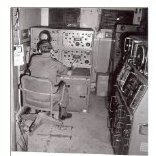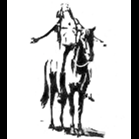Thai man releases video about living off the grid in America’s snowy mountains
-
Recently Browsing 0 members
- No registered users viewing this page.
-
Topics
-
Popular Contributors
-
Latest posts...
-
0
Accident Tanker Crashes in Bangkok, Spilling Over 30 Tonnes of Oil
Pictures courtesy of Khaosod. A traffic incident occurred in the early hours of the morning of 22 May, when a tanker carrying over 30 tonnes of Carbon Black Feedstock Oil, overturned on a busy ring road in the capital, spilling its hazardous load and forcing authorities to shut down the highway. The crash took place at approximately 01:20, on the Kanchanaphisek Ring Road, near kilometre marker 52+900, heading towards Bang Pa-In in the Pravet district of Bangkok. Highway Police Division 2, Subdivision 8, responded to the emergency call and quickly coordinated with highway rescue services and volunteers from the Poh Teck Tung Foundation. Upon arrival, officers discovered the tanker, registered in Chonburi had slammed into the central concrete barrier of the six-lane road and overturned. The front of the vehicle was badly damaged, and large quantities of the oil had spilled across the road surface, raising concerns about both environmental damage and hazards to motorists. Emergency crews immediately closed the affected stretch of road to all traffic. Sand was deployed to contain the oil and reduce the risk of further crashes. A large crane was summoned to remove the toppled vehicle. The driver, identified as 25-year-old Mr. Amporn, told police that he had collected the oil from Laem Chabang Port in Chonburi and was en route to Ang Thong province. He admitted to falling asleep at the wheel, which caused him to lose control and veer into the concrete barrier. The impact caused the lorry to flip over, ejecting him from the cab. He sustained facial injuries in the crash. Mr. Amporn was taken to hospital for treatment and will be summoned for further questioning as investigators seek to determine whether any additional factors contributed to the crash. The clean-up operation continued into the morning as officials worked to safely clear the roadway and assess any environmental effects. Adapted by Asean Now from Khaosod 2025-05-21. -
144
Report Police Clamp Down on Prostitution to Protect Pattaya’s Image
If nothing else, then covid should have shown you this is bs. They survived just fine when the sex industry was shut down. -
6
THAILAND LIVE Thailand Live Friday 23 May 2025
Thaksin to Address International Drug Crimes in Keynote Speech Picture courtesy of Daily News Former Thai Prime Minister Thaksin Shinawatra is set to make a significant reappearance on the public stage with a keynote speech tackling international drug crimes. Full story: https://aseannow.com/topic/1361486-thaksin-to-address-international-drug-crimes-in-keynote-speech/ -
15
Video Thai Paratrooper's Life-Saving Move Amid Mid-Air Chute Failure
I don't think you would have seen moves in that video. The jumpers look to be pretty high up, much higher than the three jumps I made from helicopters, which was at 1200 feet (366 meters) above ground. As someone else posted, you don't mess around with the main chute if it does not deploy because you don't have time to. You immediately go to opening the reserve, grab it, and throw it away from you. -
0
Report Thaksin to Address International Drug Crimes in Keynote Speech
Picture courtesy of Daily News Former Thai Prime Minister Thaksin Shinawatra is set to make a significant reappearance on the public stage with a keynote speech tackling international drug crimes. Scheduled for 27th May, Thaksin will present at the Office of the Narcotics Control Board (ONCB) in Din Daeng, focusing on the theme “Drug Trafficking: Cross-Border Crime Perspectives and the Challenges of Sustainable Solutions.” This announcement follows a period of silence after Thaksin's raised profile in recent court proceedings. Earlier, he was involved in a Supreme Court hearing regarding his time spent in a police hospital. His forthcoming speech aims to address the complex challenges posed by cross-border drug trafficking and explore sustainable methods to combat these issues. Thaksin's speech is part of a broader initiative coinciding with a vital assembly of the task force dedicated to the prevention, suppression, and resolution of drug problems in Thailand. This group, comprising government officials and law enforcement agencies, gathers on the same day to discuss ongoing efforts and refine strategies to enhance their impact against narcotics-related activities. Thaksin is anticipated to discuss the importance of international cooperation and innovative policy-making to curb the rise of drug trafficking. His views are expected to stir considerable interest, given his previous governmental roles and the gravity of the drug-related problems facing the region. Adapted by ASEAN Now from Daily News 2025-05-23 -
5
Equality Watchdog: Birth Certificates May Be Requested to Protect Single-Sex Services
Sounds like a thinly veiled pretext for, that is to legally enable, discrimination against a small minority, namely trans individuals who identify as different from biological gender as determined at birth, based on infractions which in reality do not exist. In the case of trans athletes, this (in the US, certainly parallel elsewhere) there are less than a dozen [trans] individuals nationwide out of over 550k total athletes, and yet even there none have competed at an unfair advantage, nor excelled over others owing to a difference in birth determined gender assign. Thus, as with the "bathroom bills" and other culture war hogwash, this is legislation based on a false, imagined narrative, in support of a right-wing political agenda intended purely to divide and exclude rather than addressing actual deficiencies such as is the case, here in the UK, as the gross underfunding and mismanagement of the NHS.
-
-
Popular in The Pub
-





.thumb.jpeg.d2d19a66404642fd9ff62d6262fd153e.jpeg)




Recommended Posts
Create an account or sign in to comment
You need to be a member in order to leave a comment
Create an account
Sign up for a new account in our community. It's easy!
Register a new accountSign in
Already have an account? Sign in here.
Sign In Now